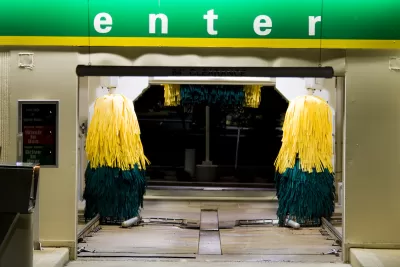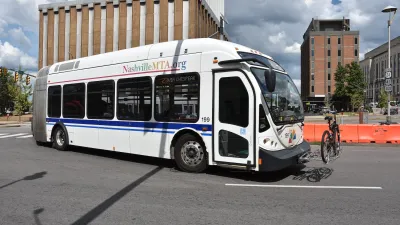City officials in northeast Ohio are putting limits on how many car wash facilities can open in their towns.

Some communities in northeast Ohio are making changes to their zoning codes that effectively ban new car wash facilities in their jurisdictions, reports Michelle Jarboe for News 5 Cleveland.
According to Jarboe, “Changes in technology, profitability and customer habits are driving huge growth in the once-grubby business,” prompting a boom in proposed facilities. A new subscription-based business model is also driving growth. “From 2012 to 2022, car-wash revenues more than doubled, from $7 billion to upwards of $16 billion, according to data from the U.S. Census Bureau and the Federal Reserve Bank of St. Louis.”
Now, new rules in towns including Brook Park and Parma Heights will block new car washes from opening. City officials say they want to ensure a broad mix of businesses. “Northeast Ohio cities are looking to put limits on other types of businesses, from dollar stores and self-storage facilities to short-term rentals and dispensaries.”
FULL STORY: Northeast Ohio cities are blocking new car washes. Here's what's driving the backlash.

Alabama: Trump Terminates Settlements for Black Communities Harmed By Raw Sewage
Trump deemed the landmark civil rights agreement “illegal DEI and environmental justice policy.”

Planetizen Federal Action Tracker
A weekly monitor of how Trump’s orders and actions are impacting planners and planning in America.

The 120 Year Old Tiny Home Villages That Sheltered San Francisco’s Earthquake Refugees
More than a century ago, San Francisco mobilized to house thousands of residents displaced by the 1906 earthquake. Could their strategy offer a model for the present?

LA’s Tree Emergency Goes Beyond Vandalism
After a vandal destroyed dozens of downtown LA trees, Mayor Karen Bass vowed to replace them. Days later, she slashed the city’s tree budget.

Sacramento Leads Nation With Bus-Mounted Bike Lane Enforcement Cameras
The city is the first to use its bus-mounted traffic enforcement system to cite drivers who park or drive in bike lanes.

Seattle Voters Approve Social Housing Referendum
Voters approved a corporate tax to fund the city’s housing authority despite an opposition campaign funded by Amazon and Microsoft.
Urban Design for Planners 1: Software Tools
This six-course series explores essential urban design concepts using open source software and equips planners with the tools they need to participate fully in the urban design process.
Planning for Universal Design
Learn the tools for implementing Universal Design in planning regulations.
Ada County Highway District
Clanton & Associates, Inc.
Jessamine County Fiscal Court
Institute for Housing and Urban Development Studies (IHS)
City of Grandview
Harvard GSD Executive Education
Toledo-Lucas County Plan Commissions
Salt Lake City
NYU Wagner Graduate School of Public Service





























